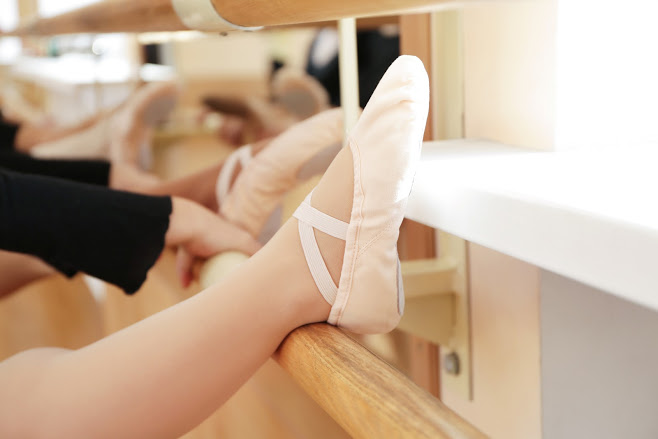Dance lessons are good for many children for a variety of reasons. Any form of dance, from ballet to jazz, is an excellent form of exercise and is good for posture and balance. Dance is also great for teaching your child discipline and provides a social outlet for children.
However, along with the health benefits of dance comes the risk of dance injuries. Dancing can cause injury to the hips, knees, ankles, and feet. When you understand these risks and how to prevent them, you can reduce your child’s risk of developing injuries and can know what to expect if your child does sustain an injury.
Is Your Child at Risk of Injury?
Children who are experiencing a growth spurt may be more susceptible to dance injuries. This growth spurt process typically occurs between the ages of 8 to 12 for girls and 10 to 14 for boys. Bones tend to be weaker during growth spurts, which can lead to a higher risk of stress fractures and broken bones.
Bones also grow faster than muscles when your child is going through a growth spurt. This creates tight ligaments and loss of muscle strength, which makes your child more vulnerable to injuries.
Common Types of Injuries
Some of the most common dance injuries are related to repetitive motion from training and performing. Repetitive stress on joints and bones can trigger strains, sprains, and stress fractures. While less common than repetitive injuries, acute injuries can also occur.
Ankle sprains can occur when a dancer inverts the ankle during a dance move. This causes pain and swelling along the ankle and may cause a feeling of instability in the ankle. If your child suffered a previous sprain, it may increase the risk of a subsequent strain to the ankle.
Knee injuries are common due to the nature and positioning of specific dance moves, such as bending and jumping. These moves place stress on the knees and can result in overuse injuries. Patellofemoral pain syndrome is a common occurrence in dancers, causing a dull and achy anterior knee pain.
Young dancers may experience a hip injury called snapping hip syndrome. This condition does not always cause pain but does cause an audible clicking or snapping sound. The sound is caused by a tendon or muscle moving across the hip bone and may cause your child to feel as if the hip is slipping out of place.
Repetitive twisting and bending of the back can lead to disk problems and back sprains. This pain may be localized to the low back or extend down the leg. It can also cause numbness and tingling sensations in the leg and foot.
How to Prevent Injuries
Make sure your child follows the dance teachers’ instructions to master the correct dance techniques when learning and performing all moves. Instruct your child never to push through when experiencing pain and to alert their teacher regarding any unusual discomfort when dancing.
Make sure your child stays well-hydrated during and after dance class. Encourage your child to follow all warm-up activities to loosen up muscles and joints before each class. Correct shoes are vital, and make sure your child’s dance studio has the proper flooring installed to reduce stress on your child’s bones and joints.
Don’t let the fear of dance injuries discourage you from allowing your child to participate in dance with all its health benefits. You can reduce the risk of your child experiencing an injury when you understand the risks, are aware of common injuries, and know how to prevent them.
Contact Omaha Orthopedic Clinic and Sports Medicine to discuss any concerns you have regarding the risk, prevention, and treatment of your child’s dance injuries.


Yes, kids can get various injuries while dancing. Parents must have a check on their kids and this blog is extremely helpful in providing necessary information on the same.